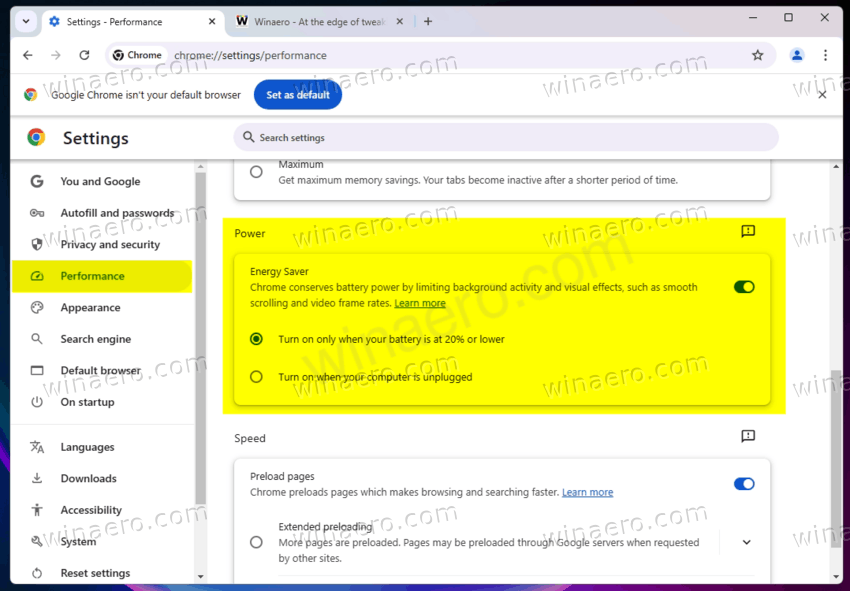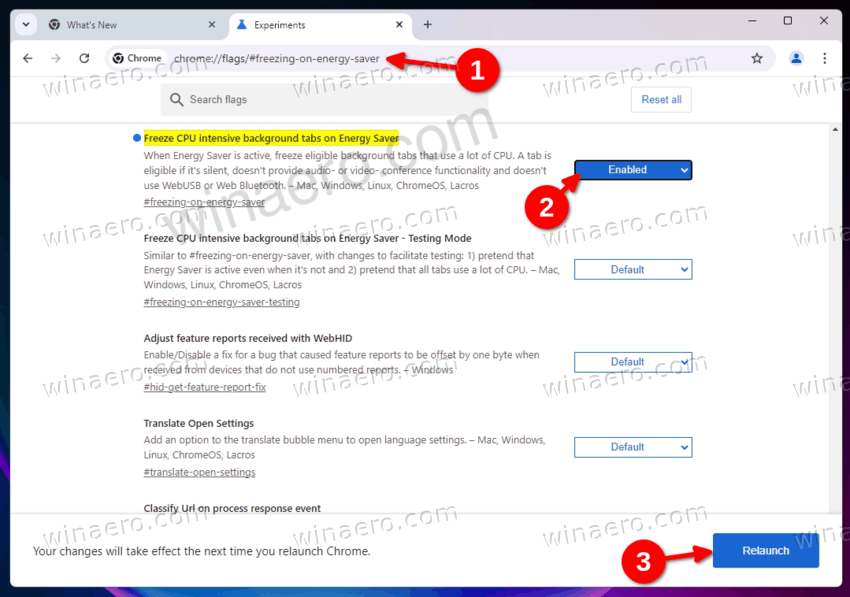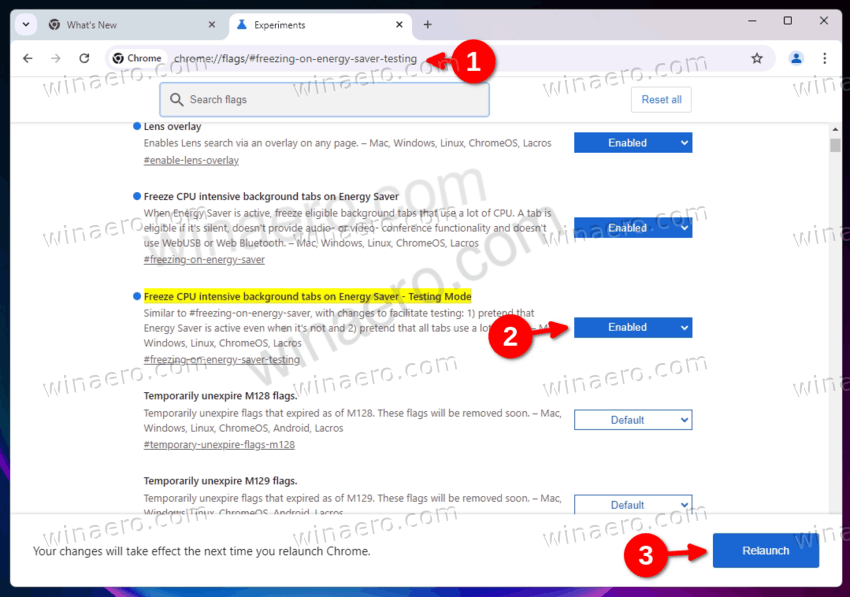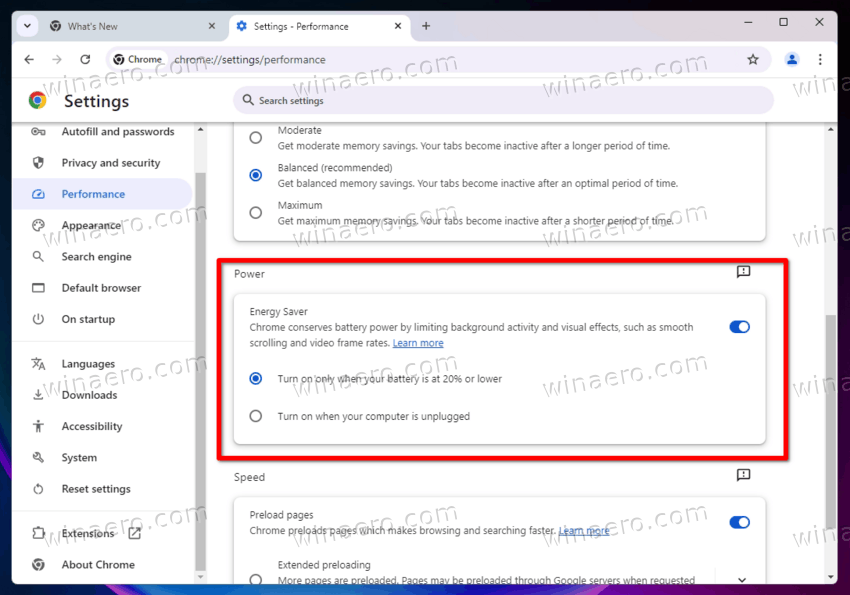One of the new features of Chrome 130 is the ability to freeze tabs in Energy Saver mode that consumes a lot of system resources. This will greatly extend battery life of your device. Google is going to gradually enable it in Chrome 131, but you can give a try to this useful feature right now.
Advertisеment
Energy Saver is a special optimization option in Google Chrome that significantly improves its energy efficiency. It limits tab background activity, user interface fancy effects, and applies certain restrictions to scripts, effect and CSS websites use. Chrome enables Energy Saver automatically when your device's battery reaches 20%. This can be changed in settings.

Starting in Chrome 130, the browser comes with an updated energy saver mode. It supports automatic freezing of tabs that consume a lot of CPU resources, but do not output sound and have been not in use for more than 5 minutes. This allows it to differentiate video streams, podcasts, and similar media content from non-optimized websites.
For better compatibility, Chrome excludes from the freezing process tabs that are related to managing external devices or containing video and audio streams. Chrome detect such tabs by their access to USB, Bluetooth, camera, input devices and microphone. Also, it checks if a tab works with the RTCDataChannel or MediaStreamTrack protocols. This ensures that it will not freeze something really important for you.
As I said earlier, Chrome 131 to be the first version with auto-freezing gradually activated by default, starting with 1% of users. But anyone interested in early feature test-drive can activate it as follows.
Enable Tab Auto Freezing for Energy Saver in Chrome
To make Chrome auto-freeze tabs with heavy CPU usage when on battery, do the following.
- Open a new tab in Chrome, and type
chrome://flags/#freezing-on-energy-saverin the URL bar, then hit Enter. - Selected Enabled from the drop-down menu to the right of the Freeze CPU intensive background tabs on Energy Saver option.

Enable Tab Freezing for Energy Saver in Chrome. Image credits: winaero.com - Now, navigate to the following flag:
chrome://flags/#freezing-on-energy-saver-testing, and enable it.
Image credits: winaero.com - Once prompted, relaunch Google Chrome.
- Finally, make sure that you have enabled Energy Saver in Chrome settings > Performance > Power.

Chrome settings. Image credits: winaero.com
That's it. From now on you will find Chrome consuming much less battery when your device isn't docked.
When users enable "Energy Saver," they expect that the browser will adjust its performance to extend battery life. The tab freezing feature in Energy Saver is the right step in this direction. By reducing CPU usage in background tabs that aren’t actively in use, it will not drain the battery for nothing. Obviously, there will always be a chance to run into issues with some web app, or the need to constantly refresh a tab.
Support us
Winaero greatly relies on your support. You can help the site keep bringing you interesting and useful content and software by using these options:
